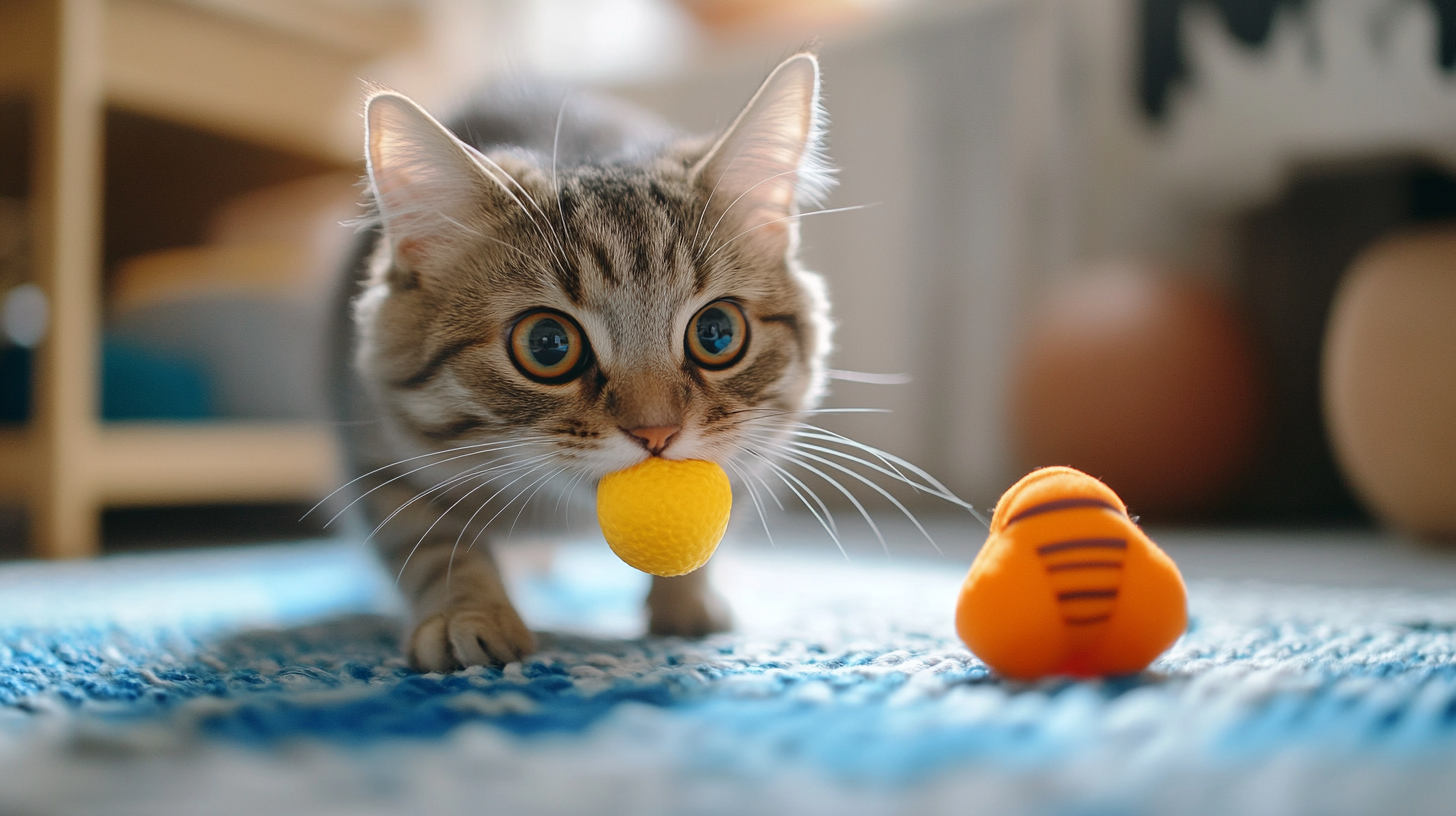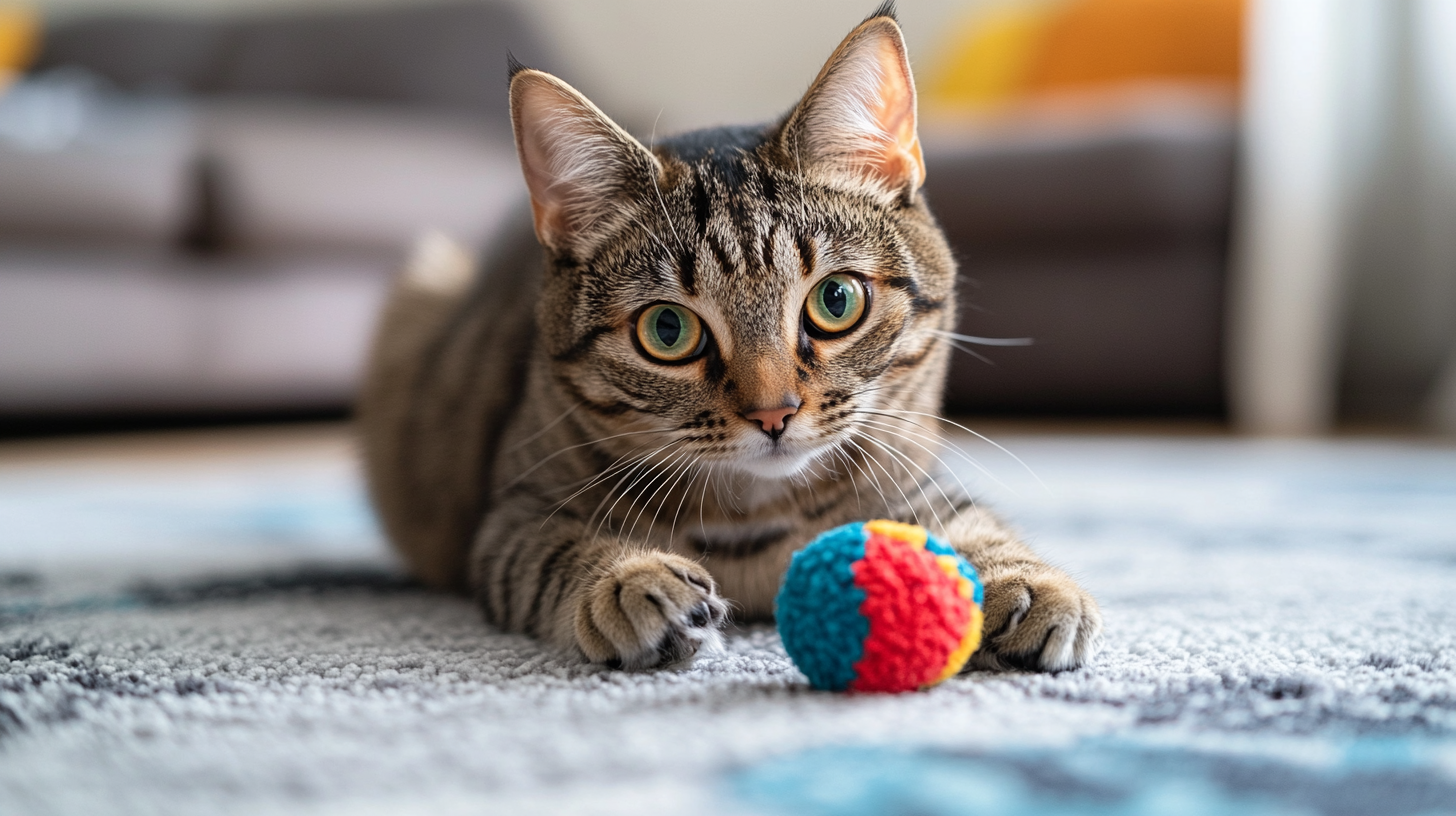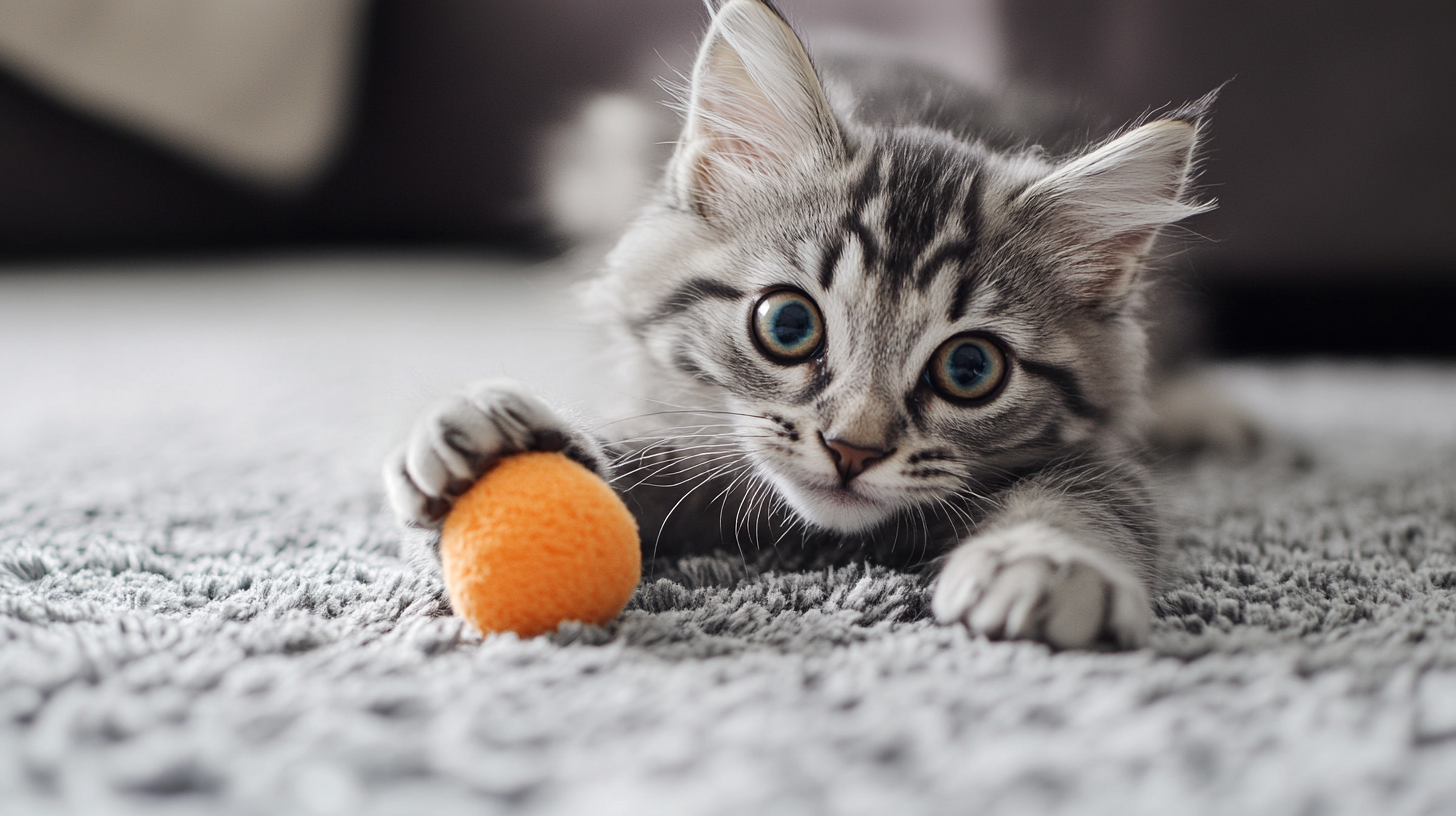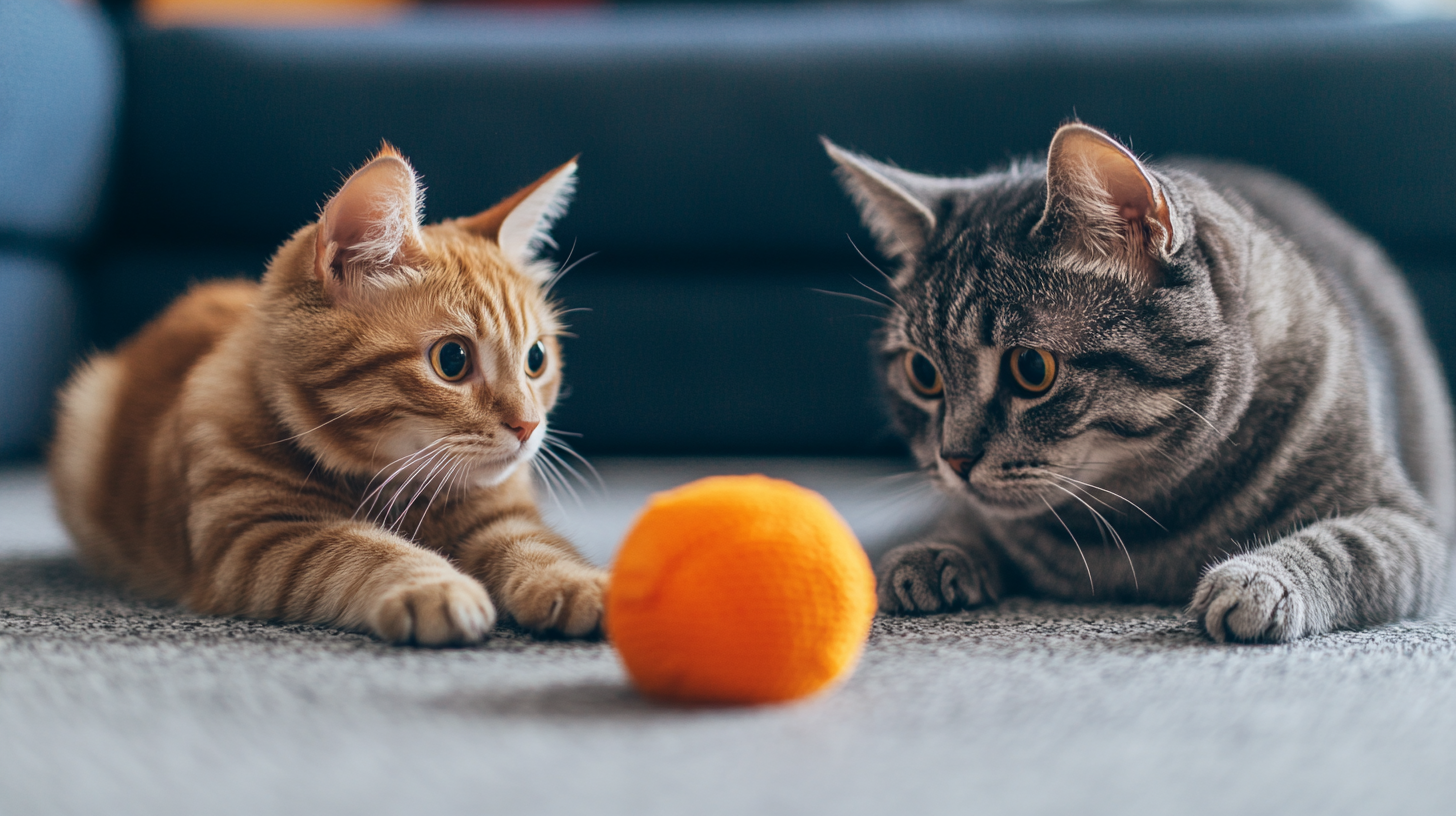You have no items in your shopping cart.

- Home /
- Blog
Ultimate Guide to Choosing the Right Pet Toys: Essential Tips for Pet Owners
Choosing the right pet toys is crucial for the well-being and happiness of our furry companions. According to a report by the American Pet Products Association, over 67% of U.S. households own a pet, highlighting the immense market and responsibility pet owners face when selecting toys that engage and stimulate their pets. Properly chosen pet toys not only provide physical exercise but also contribute to mental stimulation, which can prevent behavioral issues. With the pet toy industry projected to surpass $2 billion in the next few years, it is more important than ever for pet owners to make informed decisions about the toys they bring into their homes.
As pet owners, understanding the types of toys available and their impact on pet health becomes essential. Research indicates that interactive toys can significantly improve a pet's problem-solving skills and reduce anxiety. Moreover, toys that promote play behavior can lead to longer, healthier, and happier lives for pets. This ultimate guide aims to equip pet owners with essential tips to navigate the diverse world of pet toys, ensuring that the choices made are beneficial, safe, and tailored to the unique needs of their furry friends.

Understanding Pet Play Behavior: The Science Behind Choosing Toys
Choosing the right pet toys involves an understanding of pet play behavior, which is crucial for fostering a healthy and engaging environment for our furry friends. Dogs, for instance, engage in play not only for entertainment but also for physical exercise and mental stimulation. Recognizing the different play styles—such as chasing, tugging, and chewing—can help pet owners select toys that cater specifically to their pet's instincts and preferences. Toys that encourage these natural behaviors will not only keep pets entertained but also improve their overall well-being. Cats, on the other hand, often exhibit predatory play behaviors, which include pouncing, stalking, and batting at objects. Toys that mimic these actions, such as feather wands or small, moving objects, can provide an outlet for their hunting instincts. Understanding this behavior ensures that pet owners can choose toys that keep their cats engaged, preventing boredom and potential destructive behaviors that often stem from unmet play needs. The materials and design of the toys also play a significant role in their effectiveness. For instance, durable, safe materials are essential for both cats and dogs as they can often be heavy chewers. Toys with varying textures and interactive features can enhance the play experience, catering to different sensory preferences. By considering these behavioral insights, pet owners can make informed decisions, leading to happier, healthier pets who are more likely to engage in positive play.

Types of Pet Toys: Selecting the Right Type for Different Animals
When selecting the right types of pet toys, it’s essential to consider the unique needs of different animals. Dogs, for instance, require toys that stimulate their minds and keep them physically active. Options like interactive puzzle toys or durable chew toys can help satisfy their natural instincts while promoting healthy play. For puppies, softer toys that can withstand teething are ideal, while older dogs may prefer more robust options that can handle heavy chewing.
Cats, on the other hand, tend to enjoy toys that mimic their hunting instincts. Wand toys with feathers or strings offer an engaging way to exercise their agility, while small balls can encourage independent play. It's also important to consider the materials used in cat toys, as some cats can be sensitive to certain fabrics. Opting for crinkle toys or those with bells can add an extra layer of entertainment.
Moreover, small animals like rabbits and guinea pigs have their own unique play requirements. They benefit from chew toys made from natural wood or hay, which not only entertain but also promote dental health. Burrowing and foraging toys can provide mental stimulation, allowing these animals to engage in their natural behaviors. Each pet has distinct preferences, so observing how they interact with different toys can guide you in making the best choices for their happiness and well-being.

Safety Considerations: How to Ensure Pet Toys are Non-Toxic and Durable
When it comes to choosing the right toys for your furry friends, safety should be your top priority. Not all pet toys are created equal, and ensuring they are non-toxic is crucial for the health and well-being of your pets. Always choose toys made from safe materials, such as natural rubber, organic cotton, or FDA-approved plastics. Avoid toys containing harmful chemicals like phthalates or BPA, which can pose significant health risks to your pets. Checking for certifications or labels indicating the toy’s safety can be an excellent way to ensure you’re making a responsible choice.
Durability is another key consideration when selecting pet toys. Pets, especially dogs, have a knack for destroying toys, so opting for robust and well-constructed items can save you money and keep your pet engaged. Look for toys specifically designed for tough chewers or those labeled as “indestructible.” Additionally, regularly inspect your pet’s toys for wear and tear; this simple practice can prevent accidental ingestion of small parts that could break off. By being vigilant about safety and durability, you’ll not only protect your pets but also enhance their overall playtime experience.

The Role of Engagement: Why Mental Stimulation is Crucial for Pets
When selecting toys for your pets, one of the most critical aspects to consider is their mental stimulation. Studies suggest that pets, particularly dogs and cats, thrive on engagement and interactive play. According to the American Society for the Prevention of Cruelty to Animals (ASPCA), mental stimulation can significantly reduce behavioral issues often caused by boredom, such as chewing, barking, or excessive meowing. By providing your pet with stimulating toys, you can help address these concerns while enriching their lives.
Engagement through toys can also promote cognitive development. A study published in the Journal of Veterinary Behavior found that pets that engage with interactive toys for just 15 minutes daily exhibited improved problem-solving skills and overall mental health. Toys designed for your pet's specific needs—such as puzzle feeders for dogs or feather wands for cats—can enhance their ability to think critically and stay alert.
Moreover, the Pet Industry Distributors Association (PIDA) reports that a staggering 70% of pet owners recognize the importance of mental exercise, and a significant portion of them invest in toys that support this. The long-term benefits of engaging toys extend beyond mere entertainment; they contribute to your pet's overall happiness and well-being, reinforcing the bond between pet and owner through shared activities. Therefore, choosing the right toys not only caters to your pet's physical needs but also fosters a healthier, happier, and more engaged companion.
Market Trends: Insights into Pet Toy Industry Statistics and Consumer Preferences
The pet toy market is experiencing a remarkable shift, fueled by the increasing pet population and the growing affection for pets among consumers. Recent market insights indicate that the global pet supplies market is projected to reach an astounding $162.59 billion by 2024. This surge is largely driven by a rise in pet ownership, with more families embracing pets, including a diverse array of animals like dogs, cats, small mammals, birds, and reptiles.
In South Korea, the pet industry is on a trajectory towards a staggering $110 billion target, reflecting an exponential growth trend. This expansion is accompanied by a heightened demand for various pet products and services, emphasizing the need for high-quality pet toys that cater to both the physical and mental well-being of pets. The consumer preferences are shifting towards interactive and durable toys, which are increasingly favored for their capacity to engage pets and enhance their quality of life.
Data from the 2024 China Pet Industry Research Report highlights that the pet industry has evolved into a multifaceted sector encompassing breeding, trading, and a wide range of products and services. As pet ownership continues to rise worldwide, it is essential for pet owners to stay informed about market trends and consumer preferences while selecting the right toys that support their pets' health and happiness. This understanding will not only enrich the lives of pets but also align with the ongoing advancements in the pet toy industry.

